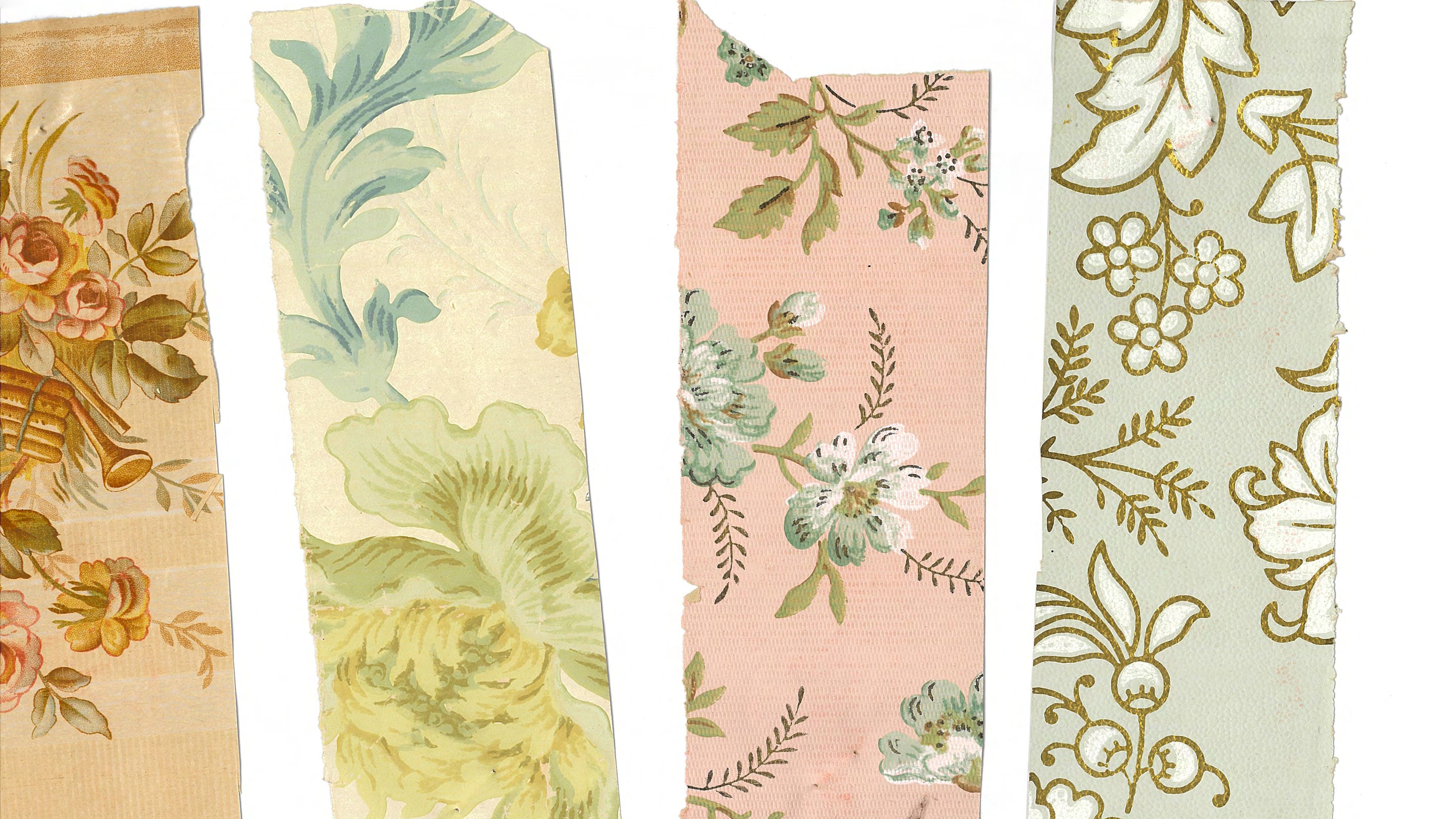Wall to wall: a marvellous wallpaper collection
The recent donation of over 3000 wallpaper samples from the private collection of John and Phyllis Murphy will be added to the Caroline Simpson Library’s existing collection to form Australia’s largest repository of historic wallpapers.
Most of the donated wallpapers date from the late 19th and early 20th centuries and are unlike anything held in any other collection in Australia. The range is comprised of unused rolls, sample books, trade literature and wallpaper lengths retrieved from historic buildings. Finding one wallpaper from this era in good condition is rare, but coming across thousands is remarkable.
Architects Phyllis Murphy (née Slater, born 1924) and John Murphy (1920–2004) became interested in wallpapers through their work on historic buildings in Victoria. However, they had never contemplated collecting wallpapers until a chance conversation with a friend in 1978 drew their attention to ‘a shed full of old wallpapers destined for the tip.’ The shed belonged to an old painter and decorator’s business, OJ Price, in the town of Kyneton, around 80km northwest of Melbourne. The Murphys recognised the value of these tip-bound wallpapers, so they purchased the shed’s contents and began their wallpaper-collecting journey.
Not only did the Murphys’ collecting expand through donations of wallpaper from friends and colleagues, but it also led to a second career for Phyllis, who became an expert in historic wallpapers. It was a steep learning curve for Phyllis who claimed
I had the idea that every Victorian interior was dark and gloomy [until] I saw the colour in these marvellous papers …2
Phyllis’ knowledge was sought by everyone from heritage architects to home renovators who found an old scrap under layers of paint. She gave talks and wrote articles about historic wallpapers in Australia and, when the 1980s ushered in a resurgence of interest in 19th-century interiors, Phyllis was engaged as an expert consultant by Paperhangings, a company that reproduced Victorian-era wallpaper designs.
Nowadays, painted walls in solid colours are generally favoured over the patterns and textures of wallpaper, but in the late 19th and early 20th centuries, the period strongly represented in the John and Phyllis Murphy collection, pattern was celebrated in a manner that today we might find overwhelming. It was an era when an uncovered surface was considered ugly and a plain wall, unfinished. Almost every home had at least one wallpaper, and many used them in every room. Today, these wallpapers are embraced for the light they can shine onto our collective past: past tastes and trends in furnishing and interior decor, and past ways we as Australians have interpreted our visual world. If our homes are tangible extensions of ourselves and our aspirations, then the colour and patterns we choose to live with must say something about our collective identities.
But wallpaper is, of course, not meant to last and can quickly be replaced by next year’s fashions. In building their remarkable collection, the Murphys have preserved these papers well beyond their intended life cycle and now that the collection has a new home at Museums of History NSW, it will be digitised and eventually made available online to the public. We are indebted to John and Phyllis Murphy for making sure that a treasure trove of historic wallpaper has been preserved and that through their generous donation, we will all be inspired by pattern design long into the future.

Notes
- Phyllis Murphy, ‘A shed full of wallpaper’, The wallpaper history review, London, 2011–12, pp25–28.
- In conversation with Phyllis Murphy [video], with Emma Telfer, presented by Open House Melbourne, Heritage Council of Victoria & Culture Victoria, 2018.
Published on
Related

Wallpaper 'sandwich' from Pyrmont
A ‘sandwich’ of many layers of wallpaper uncovered behind timber panelling has opened a small, colourful window into the popularity of wallpaper in mid 19th century Sydney

Trainspotting wallpaper from Blackdown, Bathurst NSW
Although the railway did not officially arrive at the New South Wales town of Bathurst until 1876, at a nearby property, Blackdown, a virtual railway station had been created more than 20 years earlier

Mr Fox's wallpapers
The digitisation of NSW school files at NSW State Archives has resulted in an unusual discovery: 19th-century wallpaper samples
